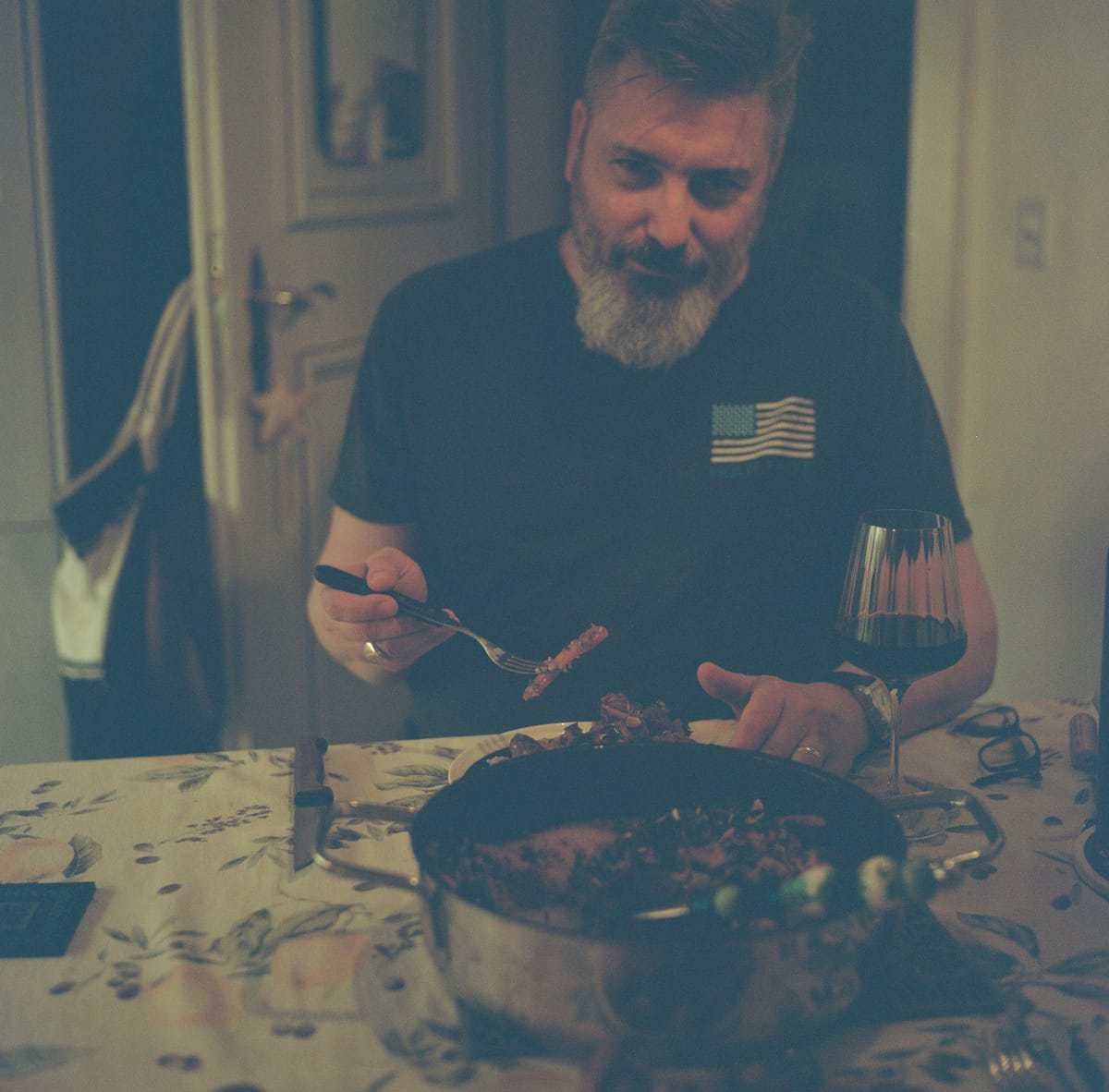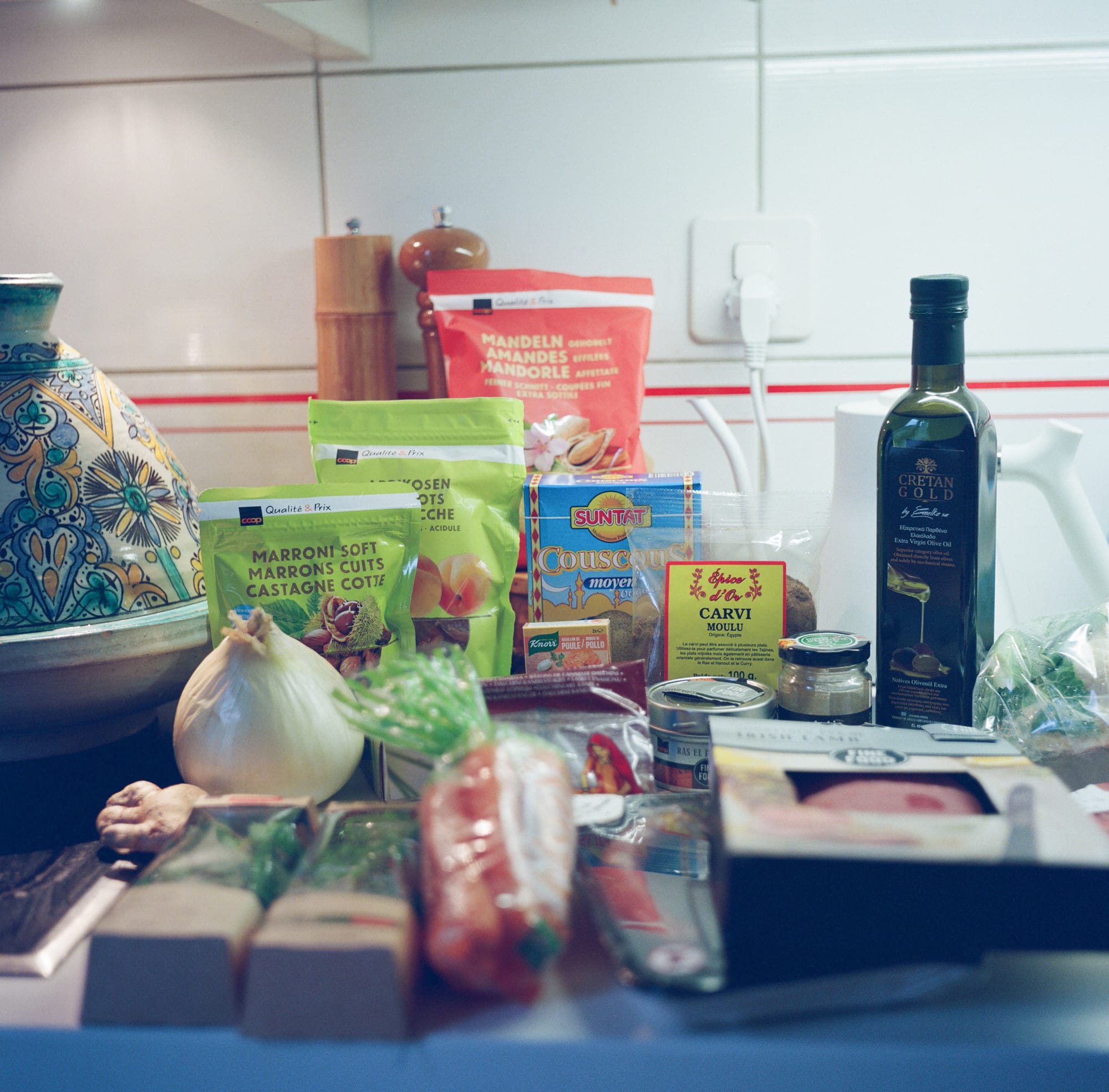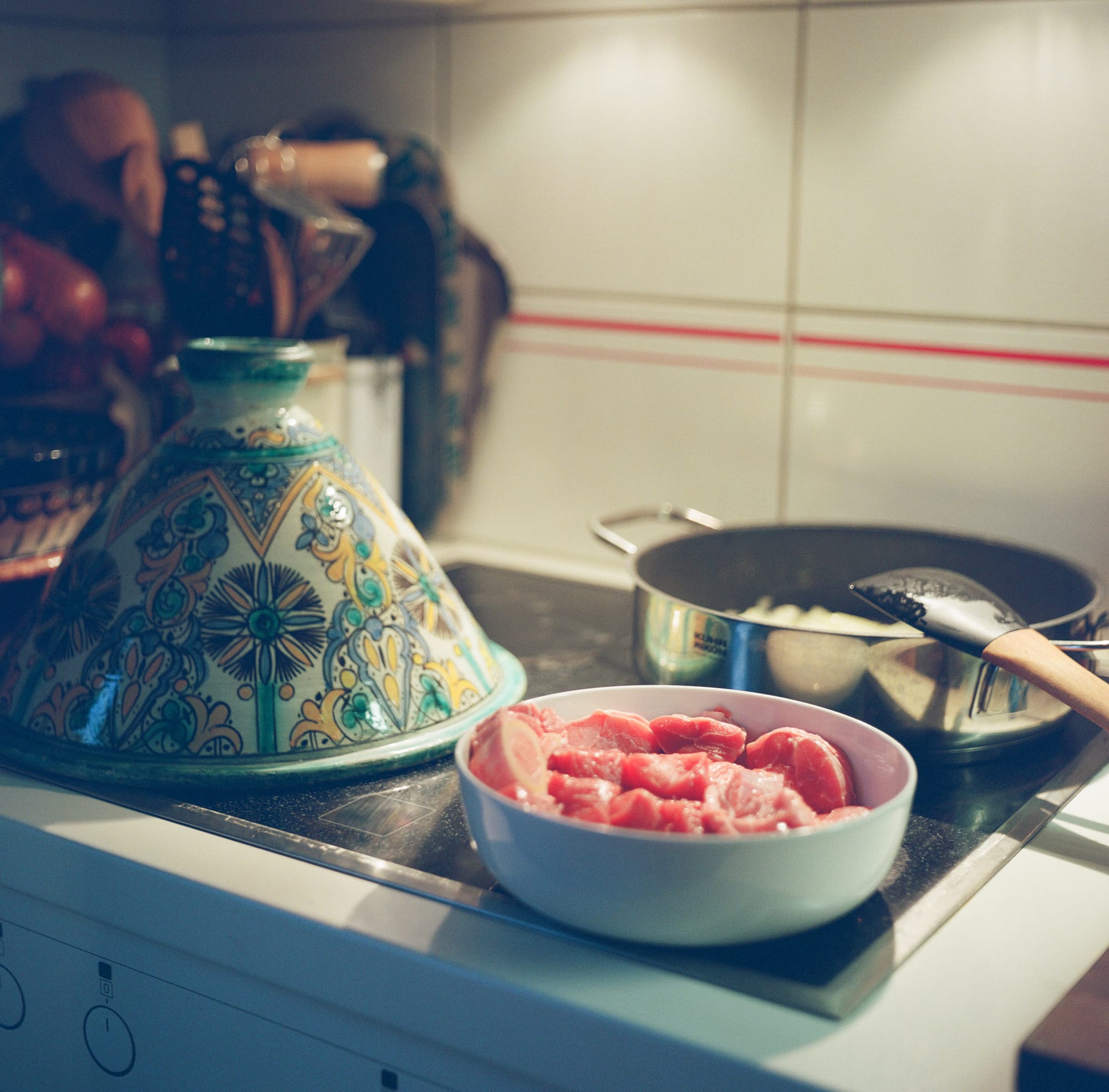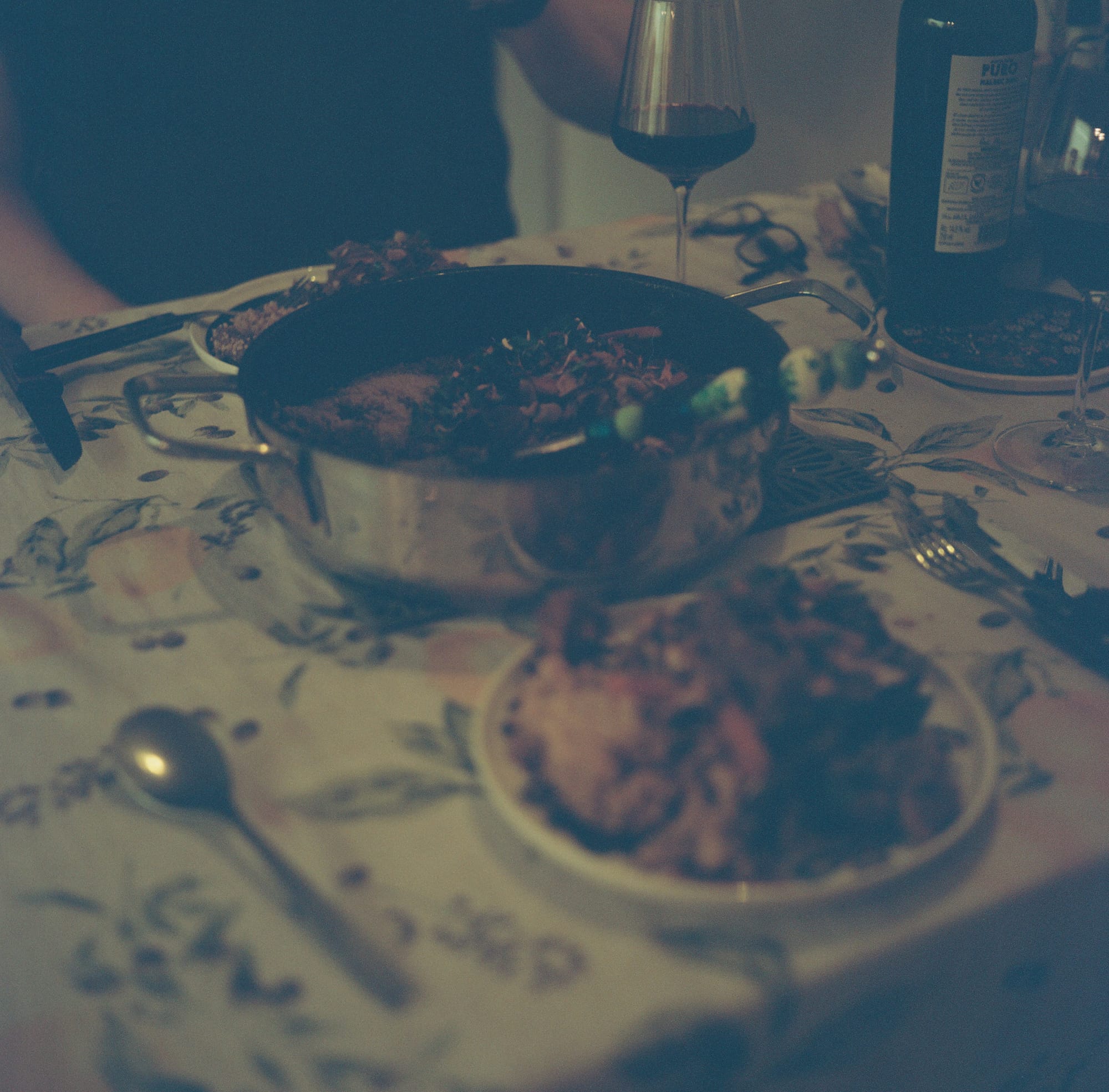What to eat MOROCCO 🇲🇦 Lamb tagine
Tagine not only refers to the dish, a slow-braised stew, that usually includes meat, poultry or fish, spices and perhaps some dried fruit or couscous, but it is also the name of the conical-shaped ceramic dish it is served in.

Lamb tagine
Published April 18, 2025 · by Amanda Rivkin Häsler
Tagine is an iconic symbol of Moroccan cuisine and restaurants worldwide that is closely connected to the history of the country. Tagine not only refers to the dish, a slow-braised stew, that usually includes meat, poultry or fish, spices and perhaps some dried fruit or couscous, but it is also the name of the conical-shaped ceramic dish it is served in. It may also be called maraq or marqa.
The name tagine in Arabic is derived from the ancient Greek word “tagenon,” meaning a frying or saucepan. Some sources suggest the word itself is Persian in origin. The dish itself dates back centuries. Its existence appears to be first recorded in the late eighth and early ninth centuries during the rule of Harun al-Rashid, the fifth Abbasid caliph. The concept of the tagine also makes an early appearance in 1,001 Nights, the Arabic language story collection from the ninth century.
Though the dish itself may be more ancient than that given that the dish has Berber roots. The Berber are an indigenous and largely nomadic group whose existence predates the Arab conquests. Their foods, such as tagine and couscous, exist as staples of North African cuisine to this day.
In the late 1990s, the late Dr. Vivien Swan identified pottery from various sites on Scotland’s Antonine Wall that had been built by the Numidian government of Roman Britain, Quintus Lollius Urbicus. One of the objects found included a casserole dish that may have been a precursor to what we know as the tagine today. Fragments of tagines were also identified among Numidian ceramics found in modern Tunisia.
Arab scholars offer numerous descriptions for how to prepare a tagine dating back centuries, with an early famous one offered by Ibn al-Adim, the Aleppo-born biographer, historian and later diplomat who died in Cairo in the mid-thirteenth century. The Arab conquests of North Africa are credited with delivering new spices and dried fruits through trade and commerce.

The spice cabinet of Moroccan cuisine found in nearly every home remains ginger, cumin, salt, black pepper and turmeric. Cinnamon, paprika, Sahara chiles are also common, while southern Morocco is a source of saffron. Ras el-hanout, literally, “head of the shop,” a spice mix of 20 to 40 spices concocted by a shop owner, is another popular ingredient. The most common herbs are parsley and cilantro, while dates and preserved lemons are also popular ingredients.
The original style of preparing tagine involved clarified butter to preserve the ceramic surface as well as a puree of chopped onions for added flavor. Later, olive oil (as well as olives) became commonplace through trade with the Moors of Andalusia and especially after they were sent packing with the Catholicization of the Iberian Peninsula by King Ferdinand and Queen Isabella in 1492.
Maghrebi Jews are also known to eat and prepare tagine due to their historical presence in North Africa. In Sephardic cuisine, the tagine tradition continues during Shabbat dinners on Friday night much as it does for Muslims at lunch on Friday after prayers. For both monotheistic faiths, it also remains a dish of celebration and holidays.
Ghillie Basan, the author of the Tagines & Couscous cookbook, writes, “Although originally a Berber dish, the tagine has evolved with the history as waves of Arab and Ottoman invaders, Moorish refugees from Andalusia and French colonialists have left their influences on the cuisine.”

The local geographic specialty is something quintessential that we see over and over again when it comes to national dishes. Every part of Morocco has its own specialty tagine from the High Atlas Mountains to the more barren lands of the eastern part of Morocco. Before the Phoenicians, Arabs and Ottomans arrived In Morocco, the Berber diet consisted mainly of chickpeas, couscous and lentils.
Berbers comprise roughly 40 percent of Morocco’s present population and their cultural imprint and heritage remains hugely present in the country’s public life. Arab nomads known as the Bedouin, now a minority in Morocco, subsisted traditionally on a desert diet of camel, lamb and dairy but nowadays are increasingly abandoning the pastoral and nomadic life for the towns.
Low heat is essential for slow cooking or stewing a tagine. The typical tagine combines meats, poultry or fish with vegetables or fruit along with spices, while nuts and dried fruit may potentially be added. Paprika and chili are common ingredients in vegetable tagines. A sweet and sour combination of vegetables and fruits with meat is also common. The domed lid of a ceramic tagine traps steam and returns the condensed liquid into the pot, which is why only a minimum amount of water is needed to cook meat in a tagine.
Generally, a tagine is served with bread which can be used to scoop up the contents inside a ceramic tagine in the absence of cutlery. In Islamic cultures, the right hand is used as the left hand is deemed uncleanly as it is used for personal hygiene.
The tagine is considered a communal dish when it is served as one large dish in the middle of the table. In such instances, the general etiquette is to stick to the portion of the dish that rests closest to you. Fridays are the Islamic world’s cultural Sunday (after prayers) when tagine is served by family and for friends as well.
As the consuming of tagine is as much about the dish as the experience, a chance to pause and reflect at the end of the week. Though if one takes too long, a Moroccan host might encourage you to “Eesh! Eesh!” Or, “eat, eat!”

Recipe
Ingredients:
1 large white onion
Olive oil
300 grams short loin eye of Irish lamb
300 grams of veal shank
Maldon salt
10-15 grams of ginger
2 sticks of cinnamon
100 grams of dried apricots
50 grams of soft chestnuts
4 mejdool dates, with pits removed
1 dried lemon
1 fresh lemon
2 tablespoons of date sugar
1 tablespoon ground caraway
2 tablespoons ras al-hanout
Saffron
Pimente d’espelette
1 chicken bouillon cube
1 merguez sausage
1 cup diced almonds
20 grams of cilantro
Step 1: Dice the large onion and place in pan with olive oil on low heat. Allow for onions to caramelize.
Step 2: Cut lamb into one to two-inch pieces. Sprinkle salt on top and set aside.
Step 3: Peel 200 grams of small carrots and quarter. Set aside. Dice ginger and set aside.
Step 4: After 60-90 minutes as onions become translucent and begin to brown and take on a natural sweetness, add ginger and cinnamon and stir. Add lamb and carrots and place 3-4 sticks of thyme on top and cover the tagine. Allow to steam 10 minutes.
Step 5: Combine dried apricots, soft chestnuts, dates and dried lemon. Squeeze juice of fresh lemon over it and add date sugar and combine.
Step 6: After ten minutes, lift up tagine and add dried fruit along with ground caraway, ras al-hanout along with a pinch of saffron and pimente d’espelette. Stir and combine and cover for another ten minutes.
Step 7: Lift tagine, pour in two cups of chicken stock, place merguez over the lamb and place tagine back on for another 60-90 minutes.
Step 8: Lift tagine and see if meat if fork tender. If so or nearly so, push meat and fruit to one side and pool juices in a corner. Add a few handfuls of dry couscous at a 1:2 ratio of couscous to liquid.
Step 9: In a separate pan heat 4 tablespoons of olive oil. Once hot, add almonds and a pinch of salt. Stir until toasted and pull from fire.
Step 10: Garnish with toasted almonds and chopped cilantro.
Learn where to eat Moroccan food in Switzerland.
Follow our social media pages @swissglobaldining on Instagram, TikTok and YouTube